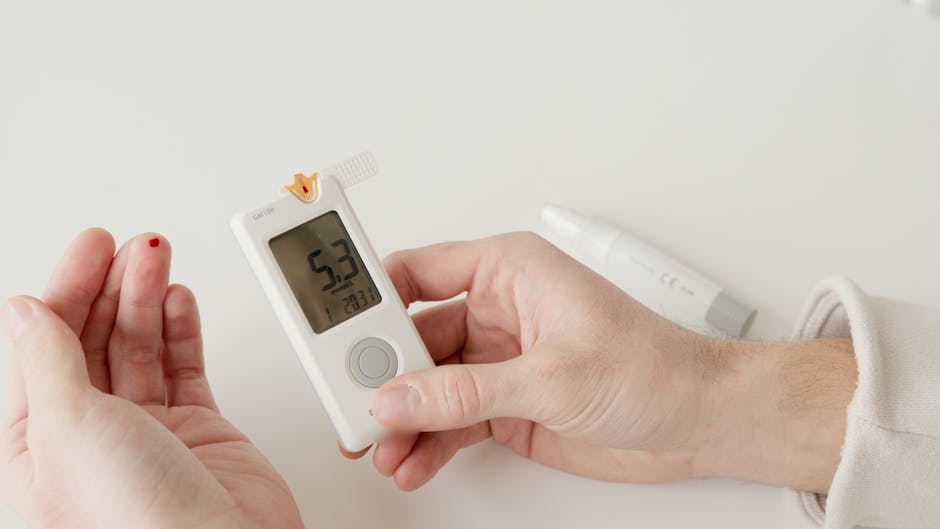Emotional Mastery: The Biofeedback Revolution with Wearables
In a world where anxiety and stress seem to be constants in our lives, the rise of biofeedback through wearable technology is revolutionizing how we manage our emotional states. Imagine accessing real-time insights about your emotional well-being at the flick of your wrist. The newest wearable tech not only tracks your heart rate but also provides feedback that helps you understand what's happening within you at that very moment. These devices are sculpting a new frontier in emotional regulation—one that intertwines technology with personal health.
The Intersection of Technology and Emotional Regulation

Recent advancements in wearable tech are enabling users to navigate their emotional landscapes like never before. Devices such as smartwatches, fitness trackers, and specialized biofeedback devices measure physiological responses—like heart rate variability, skin temperature, and even brain activity—offering a window into our emotional states.
According to a study published in the Journal of Affective Disorders, individuals who utilized biofeedback techniques saw a significant reduction in their stress and anxiety levels. Rather than relying solely on generalized advice or therapy sessions, wearables empower users to take control of their emotional well-being in real-time.
Choosing the Right Wearable Device

Before diving into the world of biofeedback, it's crucial to select the right device tailored to your needs. Here’s a breakdown to guide your decision:
1. Research Your Options

With the market flooded with devices, start by researching brands and models that specialize in biofeedback. Popular options include:
- Emwave Pro: A device designed to help you regulate your heart rhythm and anxiety levels.
- Muse Headband: This EEG headset offers insight into your brain activity, guiding you through meditation and mindfulness.
- Empatica Embrace: This smartwatch is particularly aimed at seizure detection but provides insights into stress levels and emotional states.
2. Understand the Metrics

Familiarize yourself with the metrics each device employs. Key indicators include:
- Heart Rate Variability (HRV): A higher HRV can indicate better emotional resilience.
- Galvanic Skin Response (GSR): Measures the electrical conductance of your skin, which can change with emotional arousal.
- Body Temperature: Fluctuations can indicate stress levels.
3. Align with Your Goals

Determine what you want to achieve. Are you looking to lower stress? Are you interested in enhancing your focus? Tailor your device choice to match these goals.
Interpreting the Feedback

Once you've selected your device, the next step is interpreting the feedback it provides. Wearables may seem overwhelming at first, but understanding the metrics can significantly enhance emotional regulation.
1. Regular Monitoring

Consistency is key. Regularly check your readings to identify patterns in your emotional states. You might notice that specific triggers lead to increased heart rates or fluctuations in GSR.
2. Contextualize Your Data

Consider the context in which your readings occur. Did you just navigate a stressful situation at work? Reflect on how your body responded and what you could do differently the next time.
3. Use a Journal

To better connect with your findings, maintain a journal. Document your physiological data alongside your feelings and experiences. Over time, this will help reveal underlying patterns that drive your emotional responses.
Practical Strategies for Emotional Regulation

Armed with real-time data and insights, you can deploy practical strategies to manage your emotional well-being effectively.
1. Breathing Techniques

When your device indicates an increase in stress, taking a moment for controlled breathing can be beneficial. Try the 4-7-8 technique: inhale for four seconds, hold for seven seconds, and exhale for eight seconds. This method can promote relaxation by decreasing your heart rate.
2. Mindfulness and Meditation

Engaging in mindfulness practices can effectively balance your emotional state. The Muse Headband, for example, aids in monitoring your mental activity during meditation, allowing you to focus on achieving a calm mindset. These practices can enhance self-awareness and emotional control.
3. Engage in Physical Activity

Regular physical exercise has significant benefits for mental health. Wearables often track physical activity along with emotional data, enabling you to see how different types of movement contribute to your emotional regulation.
4. Seek Professional Support
While self-help strategies are helpful, don’t hesitate to seek professional support when needed. Therapists and mental health professionals can guide you alongside your wearable technology insights to develop a tailored strategy that addresses your unique emotional landscape.
Further Resources and Learning
Dive deeper into related concepts and trends: - For more on using neurofeedback for focus, check out Mindful Tech: Using Neurofeedback Devices for Laser Sharp Focus. - Explore the implications of AI in emotional intelligence at Virtual Empathy: Enhance Emotional Intelligence with AI Insights.
What Lies Ahead for Wearable Tech and Emotional Regulation
As technology continues to evolve, the future of wearable devices promises even more robust features for monitoring emotional health. With increasing integrations of AI and machine learning, future devices may provide even more personalized insights, predicting stressors before they escalate.
The fusion of technology and emotional well-being is more than a fleeting trend; it’s becoming a cornerstone of modern health management.
Final Thoughts
Wearable technology has heralded a new era in emotional regulation, providing us with the tools to tackle stress and anxiety effectively. By selecting the right device, interpreting the feedback accurately, and employing practical strategies, users can forge a path towards greater emotional well-being.
As we navigate the complexities of modern life, harnessing technology for mental health is not just beneficial; it's transformative. Allow biofeedback and wearables to become allies in your journey toward emotional mastery.



